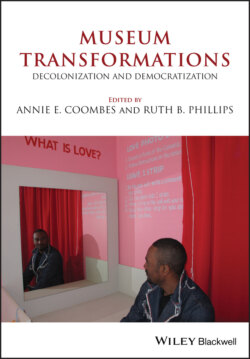Читать книгу Museum Transformations - Группа авторов - Страница 66
Refounding settler nations
ОглавлениеIn the wake of World War II international movements concerned with both racism and rights forced nation-states like Australia, Canada, and New Zealand to pay greater attention to the needs of their indigenous peoples. The demands made at first to overturn racially discriminatory policies and practices and to grant citizenship rights to aboriginal people could be accommodated relatively easily. They amounted to a call for inclusion within the settler state and assumed a future in which the importance of racial difference would recede. However, beginning in the mid- to late-1960s, indigenous peoples increasingly demanded indigenous rights and even asserted that they were sovereign entities. The distinctive nature of these demands were harder to assimilate because, apart from anything else, they rested on the articulation of histories that confounded the ways in which these nations had imagined their past, present, and future, not least because they rested on an assertion of the aboriginality of the indigenous people and thus their status as the nation’s “first peoples.” At much the same time as these settler states had to wrestle with this difficulty, they were confronted by the need to redefine their sense of themselves as a consequence of a marked decline in the value of Britishness by which they had long figured their national character. In Australia’s case, Britain’s weakened economy and dwindling capacity to play its traditional economic and strategic role as an imperial power saw it abandon its previous commitment to a worldwide community of British peoples. Decolonization had brought about a climate of opinion that looked askance at the racial assumptions that had underpinned European imperialism, and the Australian government realized that its racial policies and practices, known by the term “White Australia,” was attracting growing criticism from postcolonial nation-states. Finally, Australia’s demographic makeup underwent considerable change as a result of the arrival of a large number of non-British migrants. In these circumstances, a term that had hitherto never been used, “national identity,” was increasingly mobilized as settler Australians sought to create a new sense of nationhood or nationalism shorn of its traditional British, imperial, and racial baggage (Curran and Ward 2010, 21–22). In particular, a transformation of the historical narratives that had once told settler Australians who they thought they were was required.
In this context, the newly elected Whitlam Labor government (1972–1975) made two moves. First, it tried to cast Australia as a culturally diverse nation and represented its history as the outcome of the common voyaging of its many peoples, thereby abandoning any hierarchy of descent or origins. But, second, it sought to appropriate Aboriginality, that is, the culture of the indigenous people, and especially their antiquity. Whereas Australia had previously laid claim to an ancient British past, it now claimed that the nation had a deep indigenous past by embracing the tens of thousands of years that had been added to human time in Australia as a result of recent archaeological research about the precolonial past. The significance of this change became all the greater as the Whitlam government began to champion the ideal of a national heritage or a national estate.
At the same time as the Australian state began to develop a national consciousness featuring a deep indigenous history, it felt the need to address the implications of its colonial past as Aboriginal people made claims on the nation as its oppressed first peoples. Indeed, the newly defined Australian nationalism and the country’s newly discovered Aboriginal history emerged simultaneously and became increasingly intertwined with one another. Consequently, many settler Australians came to believe that Australia faced a critical moral problem, namely that its historical foundations were mired in crimes that had been committed against Aboriginal people and that the nation must atone for these. By 1988, the year of Australia’s bicentenary, a richly ambiguous slogan formulated by Aboriginal political leaders, “White Australia has a black history,” neatly symbolized this emerging consciousness. This sense of the past, with all its manifold difficulties, had become central to the national discourse.
